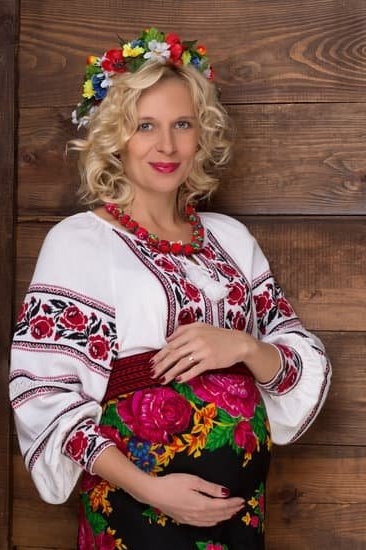Introduction
The odds of pregnancy by age are an important factor to consider when making decisions about family planning. Different age groups may have different risk factors that should be taken into account—not only regarding fertility, but also regarding the health of mother and child. Women in their 20s generally have lower chances of infertility, whereas women in their 30s and 40s are generally more likely to require assisted reproductive techniques or IVF. The chances of having a child with a birth defect may also increase with age depending upon certain risk factors such as smoking, drinking alcohol, or having other medical conditions. For these reasons, it is important to understand your own specific risks as they relate to your age before making any decisions around conception. Additionally, even if you are not considering having children at this moment in time it is still beneficial to understand the risks associated with pregnancy across various ages for future reference. Overall, understanding the odds of pregnancy by age can help you make informed decisions that prioritize your health and well-being.
The Average Biological Fertility Window and Exceptions
The average biological fertility window typically begins at a woman’s first menstrual cycle and ends at the onset of menopause. The ideal time to conceive is generally considered to be during the woman’s twenties through mid-thirties, when her eggs are most healthy and it is much easier for conception to occur.
However, women over the age of thirty-five can become pregnant as well. During this period, their odds of conceiving naturally decrease and there is a higher risk for pregnancy complications due to their advanced age. Additionally, women over forty may have trouble conceiving without medical assistance. While not impossible, the odds of reproductive success in older women are very low due to the decreased quality of her eggs.
Although rare, women outside of this normal acceptance range can conceive with proper assistance from modern science and medicine as technologies such as in vitro fertilization and donor egg procedures exist today that did not exist before. These options can allow women with diminished fertility to still have children even if they are past what was traditionally considered the ideal age range for pregnancy.
Age-Specific Fertility Rates
The chances of pregnancy vary greatly depending on a woman’s age. Generally, a woman’s odds of becoming pregnant increase as she grows older until her mid-thirties, when her fertility rate begins to decline. For example, between the ages of 25-29, the average woman has a 20% chance of conceiving each month. After that point however, those odds slightly begin to drop with ages 30-34 having an 18% chance and 35-39 filling in at 15%. Those chances take a sharp decline after 40-44 years old where only 7% of women conceive each month. This clearly indicates that while age should not necessarily be the deciding factor when trying to become pregnant, it can still have an effect on one’s chances.
Additionally, despite age being an indicator for fertility rates there are factors such as lifestyle changes one could make to increase their overall chances–these include cutting out harmful substances like smoking or excessive alcohol consumption and decreasing stress levels. Additionally proper nutrition is a key essential for those attempting to become pregnant and can increase ones chances whether you are 20 or 35 years old. Furthermore, finding the right health care provider who is familiar with fertility increases ones odds immensely so make sure to read reviews before committing to any particular doctor or clinic.
The Effect of Lifestyle and Environment
There are several environmental and lifestyle factors that can affect the odds of becoming pregnant. Diet is a major factor to consider as it can have an impact on fertility as well as influence hormone levels in the body. Eating healthy, balanced meals high in essential vitamins and minerals can create a healthier environment for conception to occur. Consuming processed and fast food, on the other hand, may negatively affect the chance of getting pregnant.
Smoking cigarettes is another lifestyle choice that can reduce fertility levels in both men and women. Chemicals in cigarettes have been linked to reduced sperm quality and mobility for men, while also contributing to female infertility due to hormonal imbalances caused by smoking. It is recommended that both partners stop smoking if they are trying to become pregnant.
Sexually transmitted infections (STIs) also pose a major risk when it comes to conception. In some cases, untreated STIs can cause scarring in the reproductive sites within males or females, potentially leading to infertility or issues trying to conceive.
Environmental pollutants such as heavy metals, industrial chemicals, air pollutants and more may needlessly contribute to fertility issues over time in both sexes if not managed properly through safe sex practices and a healthy diet. Finally, other lifestyle choices such as regular exercise and reducing artificial light exposure at night may have a positive effect on overall odds of achieving pregnancy for couples looking for answers with their fertility difficulties.
Overcoming Fertility Challenges
The odds of getting pregnant can start to decline after the age 35. This is because with age, the body’s fertility can begin to fluctuate dramatically due to deterioration in quality and quantity of eggs and decreased functioning of both hypothalamic-pituitary-ovarian (HPO) axis and uterus’ lining. Furthermore, older women have a higher risk for conditions such as endometriosis and polycystic ovary syndrome that can affect the ability to conceive.
For those experiencing fertility challenges due to age or other circumstances, there are a range of medical options available. These include medications like clomid and gonadotropins or intrauterine insemination (IUI) which is a procedure where sperm is placed directly into the uterus for increased chances of conception. In vitro fertilization (IVF) is another medical procedure used when conventional methods fail. This involves removing eggs from the ovaries, combining them with sperm outside the body and transferring one or more embryos back into the woman’s uterus. There are also alternative therapies like acupuncture, herbal remedies, nutritional supplements, homeopathy that may be adopted as supporting treatments in attempts at increasing fertility. An individual should consult her physician regarding which options would best suit her specific situation.
Overview
Understanding the odds of pregnancy by age is important for maintaining reproductive health and well-being. Women have different risks at each stage of their reproductive years, from their teens to the 40s. In general, fertility begins to drop off after the age of 30, and steadily declines thereafter. Women in their late thirties and early forties may find it much more difficult to get pregnant than women in their 20s and experience higher rates of miscarriage. As a woman approaches her late 40s, the chances of conceiving a healthy baby become significantly lower due to an increased risk of chromosomal abnormalities such as Down syndrome. It is important to remember though that every individual situation will differ based on factors such as health, lifestyle choices, and overall reproductive functioning. This blog provides information on the odds of pregnancy by age so that women can make informed decisions about their reproductive health. Ultimately, it is up to each individual woman (or couple) to decide what’s best for them in terms of fertility and pregnancy outcome.

Welcome to my fertility blog. This is a space where I will be sharing my experiences as I navigate through the world of fertility treatments, as well as provide information and resources about fertility and pregnancy.


